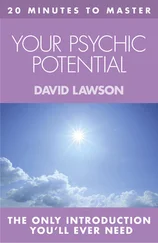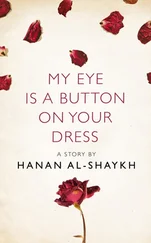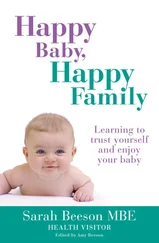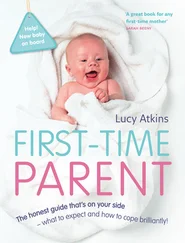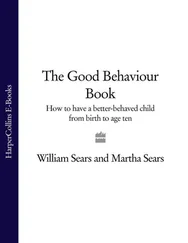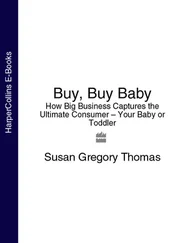The Sock Ball
This activity develops
beginning steps in eye-hand coordination
an awareness of the sock ball and the movement of it
an enhancement of the sense of touch
a stimulus to encourage eye-hand movement
Take an old sock and fill it with polystyrene,newspaper, rags or old stockings. Tie it securely to make a sock ball. Attach it very securely to the side top rail of the cot or play pen with string or sew a Velcro strap to hold it. With the baby lying on his back, move the attached sock ball back and forth from left to right and in clear view of the baby’s eyes.
Does the baby look at the ball and watch it move? Does he attempt to touch or move it, or does he just ignore it? If the baby is not interested, try again later. Do not forget this activity. Keep trying each week until you meet with success. If the baby is interested, encourage the sock ball activity, but remember a baby’s attention span is very brief. Be patient. Keep the sock ball; it can be used again later in another activity.
Throughout the week, reinforce the activities that you have done before. Observe your baby’s responses. Can your baby raise his head slightly while he is resting on his stomach? You will notice that the baby’s neck is stronger. Pat the baby’s back and talk to him. Remember to use good voice inflection. This stimulates the baby’s hearing. As you talk to the baby, turn his body over several times and observe his head and neck. Throughout the ensuing weeks you will notice how much stronger your baby is becoming.
Response to a Noise Maker
This activity develops
the baby’s listening awareness
eye-hand coordination and association (this will be noted when the baby responds to the sound direction)
Make a sound with a noisy rattle or bell.Does the baby turn his head, eyes or body in the direction of the sound? Then make the sound on the left of the baby and observe. Next, move to the right of the baby and make a sound. Do this several times. Move it first to the left of the baby, then in front of the baby, and then to the right of the baby. Let the baby touch the rattle or bell. Hold the rattle or bell in front of the baby. Does the baby reach for it? If so, let the baby touch or attempt to grasp it. If the baby does not reach for it, move to the left and make a sound with the rattle or bell. Does the baby’s head turn?
Be sure to repeat the previous weekly activities. These activities are necessary for sequential learning.
Awareness
This activity develops
an awareness of the source of sound
responses of body parts when moved
an awareness of left and right laterality
an awareness of hands
Lay the baby face down on a quiltor blanket that has been spread out on the floor. Talk to the baby or make a sound. Does the baby lift his head and try to face or see you? If not, try again. Good voice inflection varies the sound and serves to stimulate the baby’s hearing. If the baby displays some response, try making the sound in different directions. Try first to the left, then in front of the baby and then to the right. It is not necessary to make the sound from the baby’s back, because the baby cannot see you there. Be sure to observe any response the baby makes.
Turn the baby on his back and repeat the above activity. It is important to start on the left and move to the right. Early awareness of left and right laterality assists the baby in learning this concept early.
Stretch the baby’s left arm out. Does it stay straight out or does it curl back? Next, do this with the right arm. Then do the same with the left and right legs. Be sure to alternate left then right to ensure that the baby is learning left and right laterality. This concept may be more difficult to teach at a later age.
Press the palms of the baby’s hands together. Do they stay together? Or does the baby separate them and then put them back together? Separating and putting hands back together shows the baby is aware of his hands.
Interaction With Your Baby With Understanding
This activity develops
an awareness of moving objects
a stimulus to initiate a response to moving objects
an awareness of colours
a remote desire to grasp a moving object
All babies cry, but do you understand your baby’s crying?Crying is the only way a baby can communicate at first. Babies develop different kinds of cries and you should learn to distinguish between them. A baby may cry when he is hungry. He may cry when he has a stomach ache. He may cry because he has a wet or dirty nappy. He may cry because he is angry or wants attention. Some babies cry when they are bored. These cues should be your signal to interact with your baby. This is a good time to be ready to do activities. It will not necessarily be the same time every day. You will learn from your baby what is the optimum time.
Whatever cry the baby makes, respond to his needs with love, tenderness and a soft responsive voice. For example, you could call your baby by name, talk to him lovingly and comfort him.
Bright colours appeal to babies. Obtain red, orange, yellow, green, blue and purple construction or contact paper. Cover three plastic lids with the coloured paper. Cut the pieces of paper the size of the three lids. Glue or staple the pieces to the front and back of each lid in the following manner. On the first lid use red on one side and orange on the other side. Use yellow and green on the second lid and blue and purple on the third lid. Punch a hole in the top of each lid. Loop a length of one centimetre-wide elastic through each hole and tie a knot as you attach each lid. Cut another length of one centimetre-wide elastic as described in the activity for week 4. Tie one of the three lids to each of the loose knots and secure the elastic to each side of the cot or play pen. Allow them to dangle so that the baby can focus on the objects, watch the movement of the lids and begin to distinguish colour.
Touch the elastic to make the lids move slightly. Observe the baby’s responses but allow him to play alone if possible. Observe if the baby attempts to reach for the moving lids. If he does appear to reach, does he miss or accidentally touch one of the lids? If there is no response to the lids, try again later.
Try repeating the sock ball activity and some of the previous activities, and continue to initiate the coloured lid activity. Does your baby show an interest in any of the activities? Make a note of which ones and reinforce these, and try those that the baby is less responsive to later. Be sure to observe what happens when your baby responds.You may think of other activities to enrich his experiences.
Large Muscle Activities
This activity develops
the baby’s further awareness of his body and body parts
more of an awareness of left and right laterality
a vague awareness of hand grasping
Gross motor activities further developthe baby’s sense of touch. Place the baby face down on a quilt or blanket that has been spread out on the floor. Gently straighten the baby’s left arm and observe the baby’s response. Gently straighten the baby’s right arm and observe the baby’s response. Do the same with the left and right legs. Does your baby lift his head and focus on his left and right arms when you move them? When you move the left and right legs, does the baby respond in any way? Repeat this activity throughout the week and note if there is any progress. If there is no response, try again a little later.
When the baby shows some sign of response to the movement of the arms and legs, place a stuffed animal or any safe object in front of the baby. Does the baby attempt to reach for it or does he show no interest? Do not expect the baby to grab it. However, the baby may feebly attempt to do so. Continue to repeat these activities until the baby responds successfully.
Читать дальше




